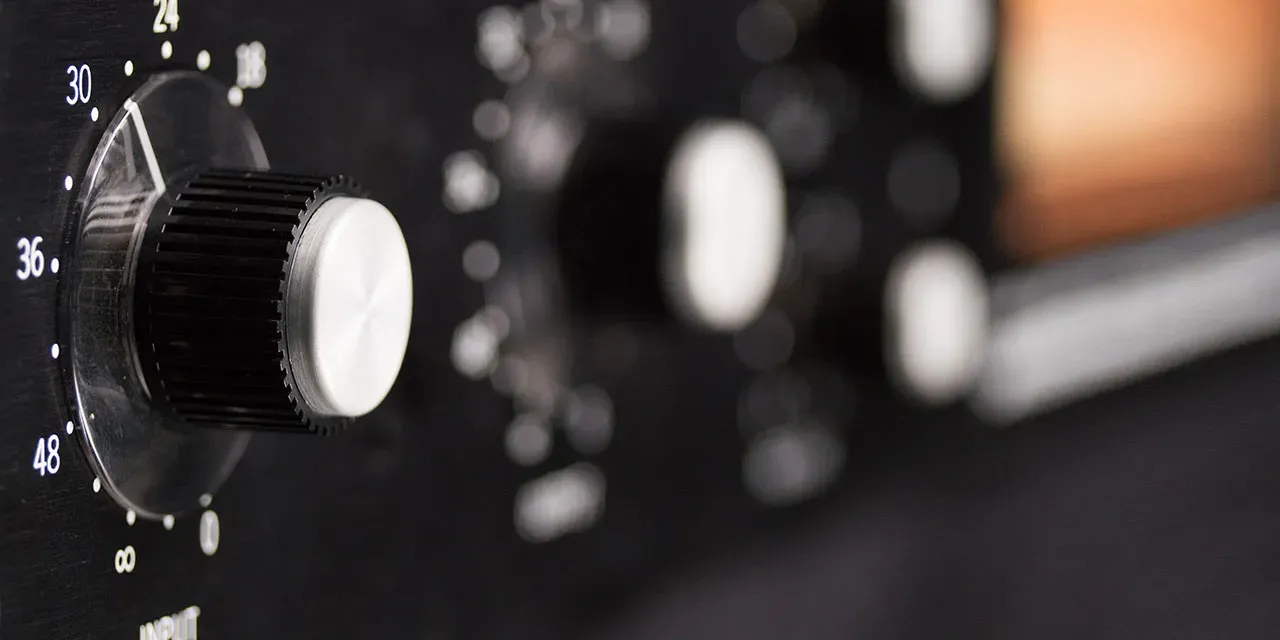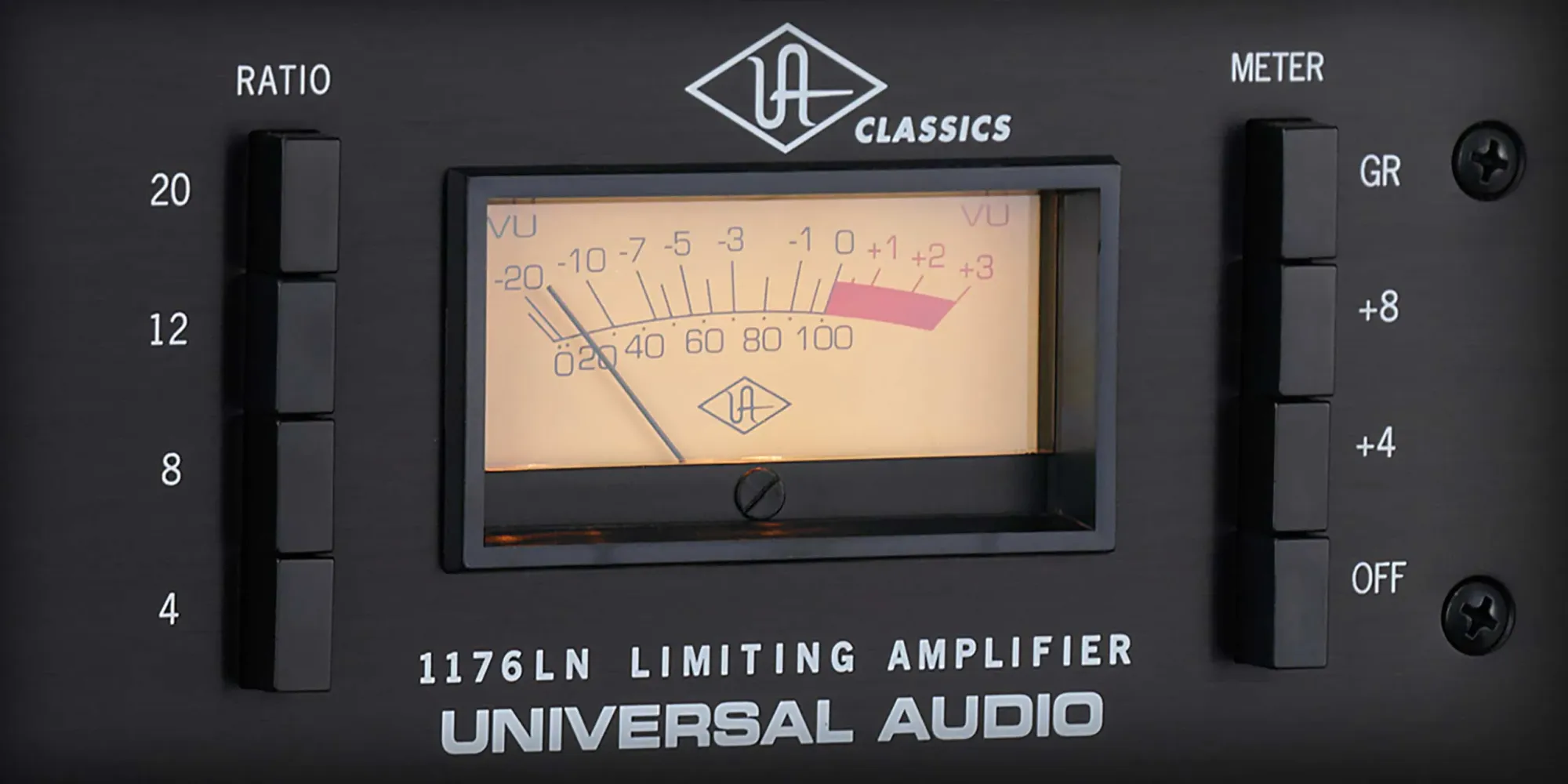UA’s 1176 Compressor Plug-In Free ‘Til March 31!
Trust me, you don’t want to miss this deal—it’s a no-brainer for anyone who’s serious about music, from bedroom beatmakers to seasoned mixers.

The UA 1176 Classic FET Compressor plug-in—you know, the digital reincarnation of that legendary studio beast—is free until March 31, 2025. Yeah, you heard that right: free, as in zero dollars, no catch. If you’ve ever dreamed of slapping that iconic 1176 sound on your tracks without dropping cash, this is your moment.
Head over to uaudio.com/ua-1176-classic-fet-compressor.html, sign up for a UA account, hit “Download Now,” and it’s yours. No UA hardware needed—this is the native UADx version, ready to roll on your Mac or Windows machine. The clock’s ticking—five days left as of today, March 26—so let’s dive into why this plug-in’s a must-grab and why it’s worth every second of your time to snag it before it’s gone.

The 1176 Legacy: A Studio Titan
If you’re new to the 1176, here’s the quick rundown: it’s the compressor that’s shaped more hits than I can count. Designed by Bill Putnam Sr. in 1967, this Field Effect Transistor (FET) monster was a game-changer—ultra-fast attack times (20 microseconds at its quickest), punchy warmth, and a vibe that’s equal parts aggressive and musical. We’re talking the box that tamed Led Zeppelin’s drums, fattened Michael Jackson’s vocals, and gave countless records that in-your-face energy. It’s been a studio staple for over 50 years, and Universal Audio—Putnam’s own company—has kept its spirit alive with hardware reissues and plug-ins that nail its soul.
The UA 1176 plug-in? It’s not some watered-down knockoff. This is the real deal, built with UA’s obsessive analog modeling to capture the hardware’s quirks—those rich harmonics, the transformer grit, the way it hugs a signal just right. I’ve messed with a ton of compressor plug-ins—Waves CLA-76, Arturia’s Comp FET-76, you name it—and the UA version stands out. It’s got that magic blend of control and character that’s tough to fake. And now, until March 31, it’s free. Like, what are we even doing if we’re not jumping on this?

Why It’s So Good
Let’s break it down. The 1176’s claim to fame is its speed—those lightning-fast attack and release times (20 microseconds to 800 microseconds attack, 50 milliseconds to 1.1 seconds release) make it a beast for shaping transients. Drums? It’ll slap a snare into the future or glue a kick to the mix like it’s bolted down. Vocals? It smooths peaks and adds a glossy sheen that’s pure radio-ready. Bass? You’ll get that thick, controlled growl that sits just right. I’ve thrown it on guitars too—clean or dirty—and it’s like instant vibe, adding punch without choking the life out of the tone.
The interface is dead simple, just like the hardware. Input cranks the compression and sets the threshold; Output adjusts your final level. Attack and Release knobs let you dial in how fast it grabs and lets go. Then there’s the ratio buttons—4:1, 8:1, 12:1, 20:1—and the legendary “All-Buttons-In” mode. Shift-click any ratio to engage it, and bam: you’ve got that smashed, overdriven sound that’s pure 1176 DNA. It’s distortion city—think pumping drums, fuzzy bass, or vocals that leap out of the speakers. I’ve used it on a stereo bus just to hear it breathe fire into a mix. It’s not subtle, but that’s the point.
UA’s promo version keeps it streamlined—no extra bells like the Classic Limiter Collection’s mix knob or sidechain filter—but it’s got the core sound nailed. Same modeling tech, same classic tones, just a leaner package to get you in and out fast. And it’s native, so no Apollo or UAD hardware required. If you’re on macOS 11+ or Windows 10/11, you’re golden—just download UA Connect, activate via iLok (online or USB), and start tweaking.

Why You Can’t Miss This
Look, I get it—free plug-ins pop up all the time. But this isn’t some random dev’s bedroom project; it’s Universal Audio, the gold standard for analog emulation. The 1176’s a $99 plug-in normally—sometimes bundled in pricier collections—and pros swear by it. Andy Johns, Andrew Scheps, Joe Chiccarelli? They’ve all leaned on the 1176’s hardware and UA’s plug-ins for that signature punch. Now it’s yours for nothing, no strings, until March 31. That’s five days to lock in a tool that’ll level up your mixes for years.
I’ve been burned by missing deals like this—slept on a free Waves plug-in drop in 2018 and kicked myself when I had to shell out later. Don’t be me. The 1176’s versatility is unreal—subtle leveling or full-on squash, it’s got you. I tossed it on a vocal chain last night—fast attack, medium release, 8:1 ratio—and it sat so pretty I barely needed EQ. Then I slammed a drum loop with “All-Buttons-In,” and it was like the ‘70s called to say, “You’re welcome.” It’s not just good; it’s that good—the kind of plug-in you’ll use on every project because it just works.
Get It Now—Seriously
Here’s the move: hit uaudio.com/ua-1176-classic-fet-compressor.html today. Sign up for a UA account if you don’t have one (takes two minutes), click “Download Now,” and the license lands in your account. Install UA Connect, authorize it (iLok Cloud or a USB stick works), and you’re rolling. Takes 10 minutes, tops, and you’ve got a studio legend in your DAW—free until March 31, 2025, 11:59 PM PDT, when this promo vanishes.
For real, don’t sleep on this. You don't even have to download it if you're feeling lazy. Just grab the deal. You can always download it later.
UA’s handing out a plug-in that’s been on classics from Zeppelin to Billie Eilish, and it’s yours for the taking. Whether you’re mixing your first beat or polishing your 50th track, the 1176’s a game-changer. Five days left—grab it, slap it on something, and thank me later.
Some Tips & Tricks
Now that it’s in your DAW, let’s get hands-on with some tips and tricks to make it sing. Trust me, this thing’s a beast once you know its moves—whether you’re taming vocals or smashing drums, it’s got secrets worth unlocking.
I’ve been digging into Universal Audio’s own wisdom (check their 1176 tips blog for the full scoop), tweaking it in my own sessions, and messing with it ‘til my mixes pop. With only five days left to grab this for free as of today, March 26, let’s dive into how to wield this legend. No gatekeeping here—just practical, chill advice.

1. Nail That “All-Buttons-In” Magic
First up, the 1176’s party trick: the “All-Buttons-In” mode. On the hardware, you’d slam all four ratio buttons—4:1, 8:1, 12:1, 20:1—at once for this wild, overdriven sound. In the plug-in, shift-click any ratio button, and it’s game on. This isn’t subtle compression; it’s a full-on smash, with a crazy curve that pumps and distorts in the best way. UA calls it “the sound of the 1176”—think Led Zeppelin’s “When the Levee Breaks” drums or that gritty edge on Black Sabbath’s vocals.
Try it on a drum bus—crank Input ‘til you’re hitting 10-15 dB of gain reduction, set Attack slow (around 3-4), and Release fast (7 or higher). You’ll hear the kit breathe and snap, with cymbals pumping like they’re alive. I tossed it on a loop last night—kicks went from flat to thunderous, snares cracked like gunshots. It’s not clean, but that’s the point—perfect for hip-hop, rock, or anything needing attitude. Dial Output to keep levels sane.

2. Parallel Punch for Drums and Bass
Here’s a slick one: parallel compression. The 1176’s fast attack (20 microseconds at its quickest) and warm distortion make it a killer for adding punch without squashing dynamics. The tip? Set up a duplicate drum or bass track, slap the 1176 on it, and crush it hard—20:1 ratio, fast Attack (7), fast Release (7), and push Input ‘til you’re seeing 20 dB of reduction. Then blend it back with the dry signal using your DAW’s fader.
I tried this on a kick-heavy beat—dry track kept the natural thump, while the 1176’d version brought this snarling low-end growl. Same with bass guitar: the clean line held its groove, but the parallel track added a fat, fuzzy edge that cut through. It’s like giving your mix a double shot of espresso—subtle if you mix it low, or in-your-face if you crank it. No mix knob on this freebie version (that’s in the Classic Limiter Collection), so your DAW’s routing is your friend here.

3. Vocals That Sit Pretty
The 1176’s a vocal champ—its speed and color are why it’s been on everything from MJ to Billie Eilish. UA suggests a classic setup: 4:1 or 8:1 ratio, medium Attack (around 4-5), and a Release around 5-6 for a natural flow. Push Input ‘til you’re getting 5-10 dB of gain reduction on peaks—enough to tame dynamics without flattening the life out of it. Adjust Output to match your input level, and you’ve got a vocal that’s smooth, upfront, and dripping with character.
The 1176’s harmonics adds this warmth that is just silky. For extra sauce, try 12:1 with a slower Attack (2-3) on a rap vocal—it lets transients pop before clamping down, giving that aggressive, present vibe. Stack it after an EQ to carve space, and it’s sitting pretty in the mix—no mud, just clarity.

4. Stereo Bus Grit Without Overcooking
Here’s where the 1176 gets sneaky: stereo bus compression. It’s not the go-to like an SSL bus compressor, but UA swears by it for adding glue and grit. Set it light—4:1 ratio, slow Attack (1-2), medium Release (4-5), and just 2-5 dB of gain reduction. Crank Input gently, watch the meter dance, and pull Output back to unity. You’re not squashing here; you’re seasoning—the 1176’s transformer vibe ties the mix together with a subtle, vintage punch.
I tested it on a lo-fi indie track—guitars, synths, drums—and it was like a warm blanket over the whole thing. The low end tightened, mids got this fuzzy glow, and it felt alive without losing headroom. Go heavier—8:1, faster Release—for a hip-hop or EDM bus if you want that in-your-face pump. It’s not transparent, so use it when you want character over cleanliness.

5. Tweak Attack and Release Like a Surgeon
The 1176’s Attack and Release knobs are your secret weapons—they’re counterintuitive (1 is slowest, 7 is fastest), but they’re where the magic lives. UA’s tip: fast Attack (6-7) grabs transients hard—great for taming spiky snares or vocal pops. Slow Attack (1-3) lets them through before compressing—perfect for punchy kicks or percussive guitars. Pair it with a fast Release (6-7) for aggression, or slow Release (1-3) for sustain.
I played with this on a snare—fast Attack, fast Release made it snap like a whip; slow Attack, slow Release let it ring with fat sustain. On a bassline, slow Attack (2) kept the pluck intact, while a medium Release (4) smoothed it out. It’s surgical—tweak ‘til it feels right, and you’ll hear why pros love this thing. The free version’s streamlined, so these controls are your playground.





